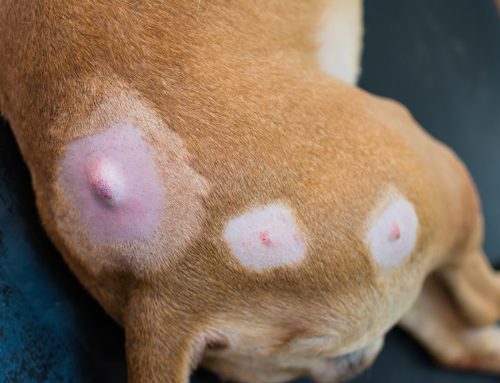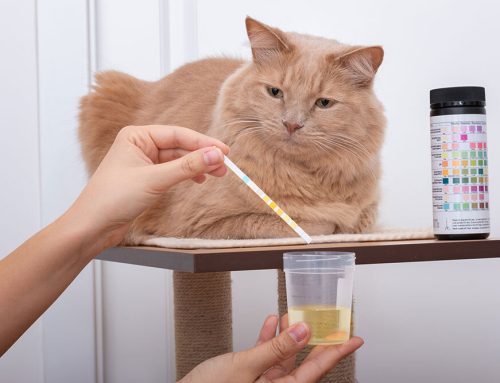Hyperthyroidism is a common disease seen in older cats caused by the over production of hormones by one or both Thyroid Glands. The average age of diagnosis is 12 years old and it is exceptionally rare in cats under 10 years old.
The most common sign you see is weight loss which is due to a greatly increased metabolism caused by the excessive amount of Thyroid Hormone in your cat’s system. Even though he is losing weight, your cat is likely to be eating well. In fact, many cats are ravenous and try to eat everything in sight. You may also see an increase in thirst and urination and your cat may begin to vomit. Less common findings are restlessness, cranky behavior, diarrhea and occasionally breathing problems.
There are two potentially serious complications if Hyperthyroidism is left undiagnosed and untreated. These complications are hypertension (high blood pressure) and a heart disease called thyrotoxic cardiomyopathy. Blood pressure can get high enough to cause retinal damage resulting in sudden blindness and the heart becomes inefficient because it is enlarged and thickened to compensate for the increased metabolic demands.
Your Veterinarian will be suspicious your cat has Hyperthyroidism if you report the common signs or if he does a physical examination. The Veterinarian will notice weight loss and he should be able to feel enlarged glands on one or both sides of your cat’s neck. Even though the gland(s) are enlarged, it is usually a benign change. Only a small number of cases, less than 2%, involve a malignant cancer of the Thyroid Gland. A blood test, T4 (thyroxine), can confirm Hyperthyroidism. This test should be part of the bloodwork recommended by your Veterinarian every year during your older cat’s annual examination. Occasionally, your cat will require ancillary blood tests to confirm Hyperthyroidism, but this is rarely necessary.
There are several options after your cat has been diagnosed, and treatment is usually very successful. First, your cat can be treated with an oral medication, Methimazole (Tapezole). This drug is given once to twice daily and his T4 and Kidney Values are monitored. Once he is regulated, he can continue with Tapezole for the rest of his life or you can choose another treatment option. The abnormal gland(s) can be removed surgically. Surgery in older pets has its inherent risks, but if he is otherwise healthy, surgery can be an excellent option. Radioiodine treatment is the best way to destroy the abnormal tissue without damaging the normal thyroid tissue. It will accumulate in the abnormal tissue, only, and destroy those cells. This procedure can only be performed at specific facilities, because your cat will literally be radioactive for a short period of time. This requires your cat to be hospitalized and cared for in a lead lined space for at least 4 to 7 days. Lastly, there is a relatively new option. A low iodine diet, which can restore thyroid health, is currently on the market. Other sources of food can provide iodine, so diet must be very strict. This food is a balanced diet and helps support kidney health as well.
There is no known way to prevent Hyperthyroidism, but diagnosis is relatively easy and treatment is generally very successful. Your cat will gain weight, eat normal amounts of food, his high blood pressure and heart disease will improve and other clinical signs of Hyperthyroidism will resolve. This is only one reason it is important to bring your cat to the Veterinarian for a Yearly Examination and Annual Blood Tests.
Established in 1981, Palm City Animal Medical Center is dedicated to providing the best possible care for your pets. With focuses on compassionate care in surgery, physical therapy and rehabilitation, preventative medicine, extensive diagnostics, and emergency service, Palm City Animal Medical Center combines exceptional medical care with a caring philosophy for pets and their owners. For more information, call 772-283-0920, visit www.palmcityanimalmedicalcenter.com or find us on Facebook at www.facebook.com/PalmCityAnimalClinic.








Leave A Comment